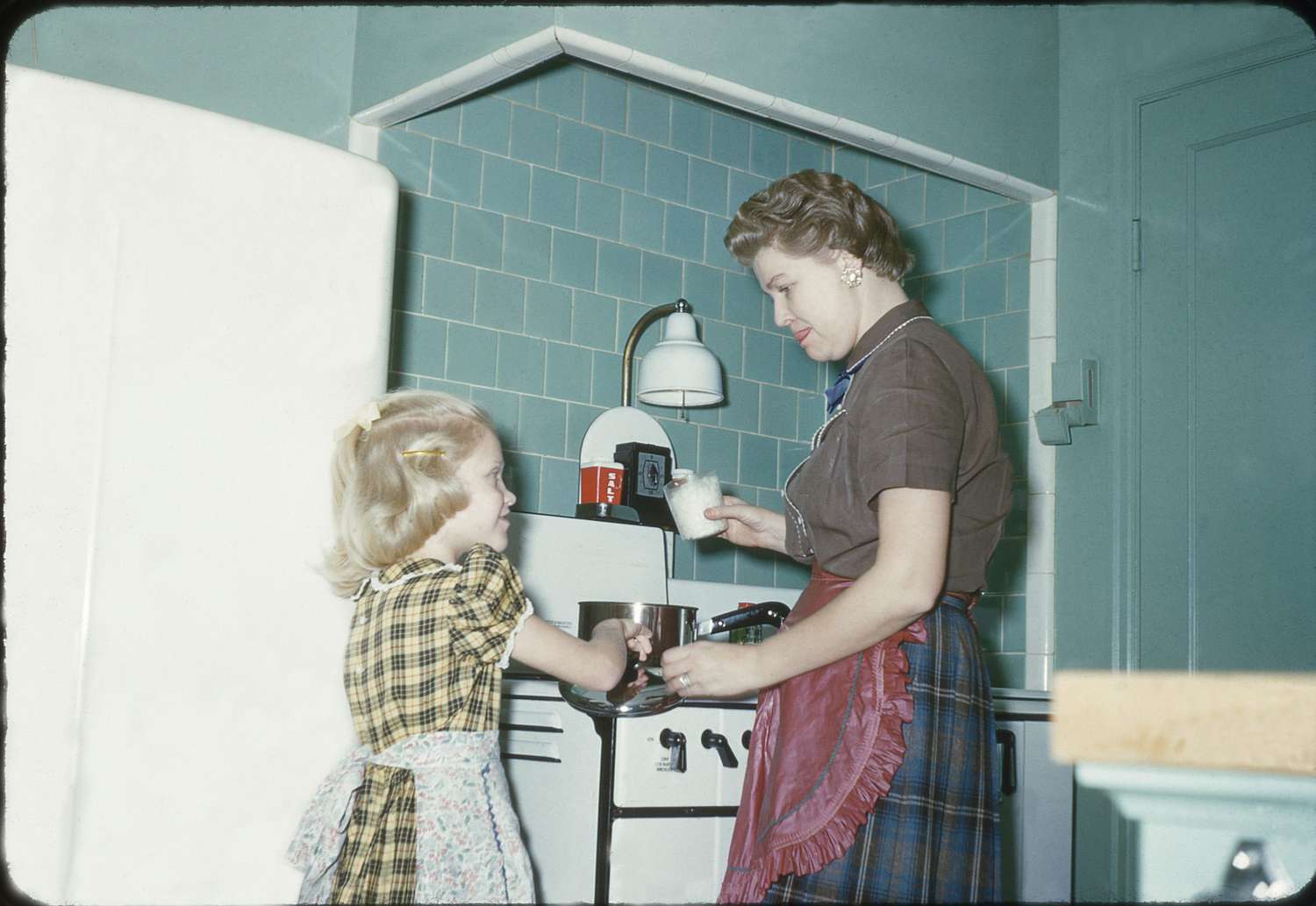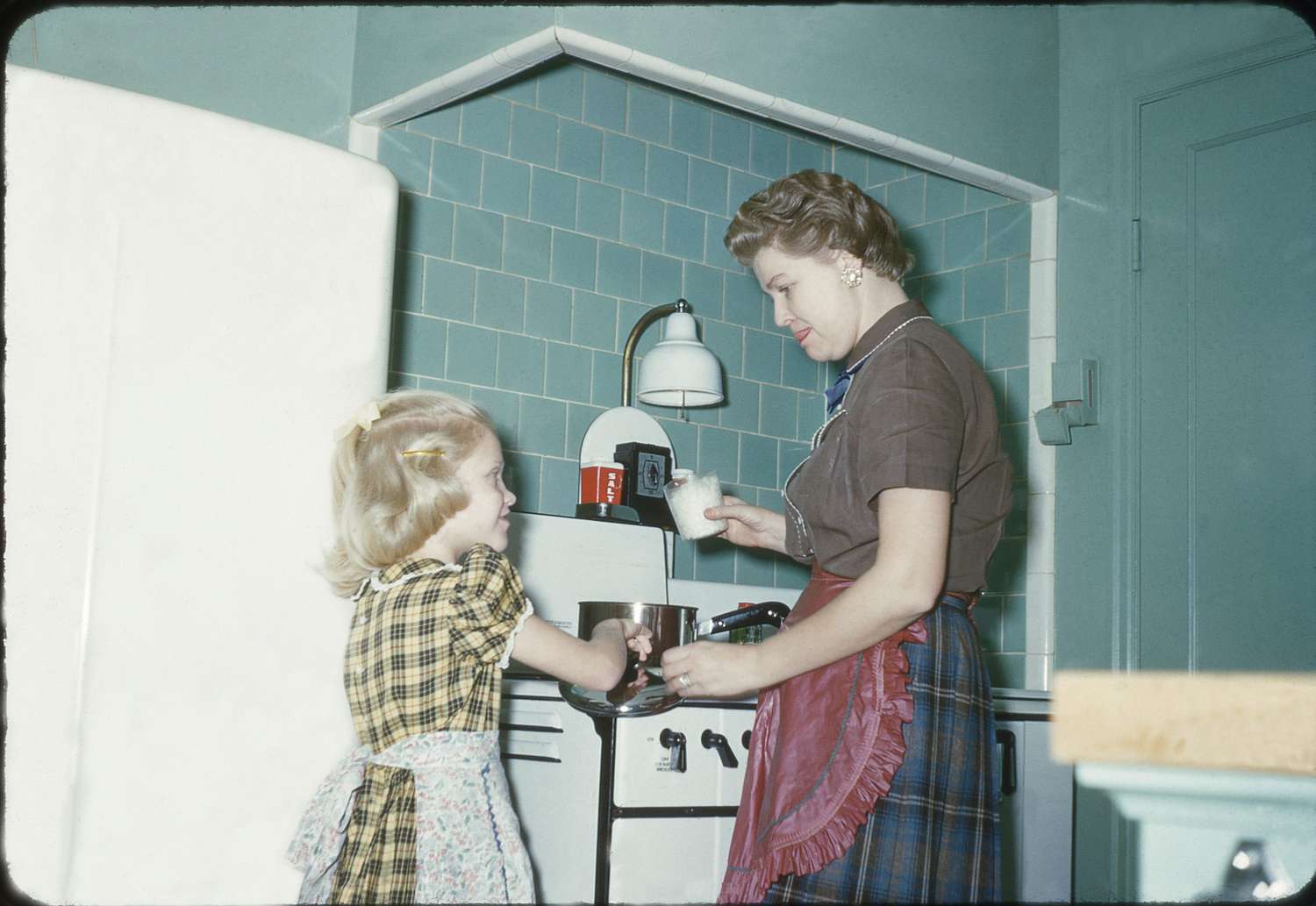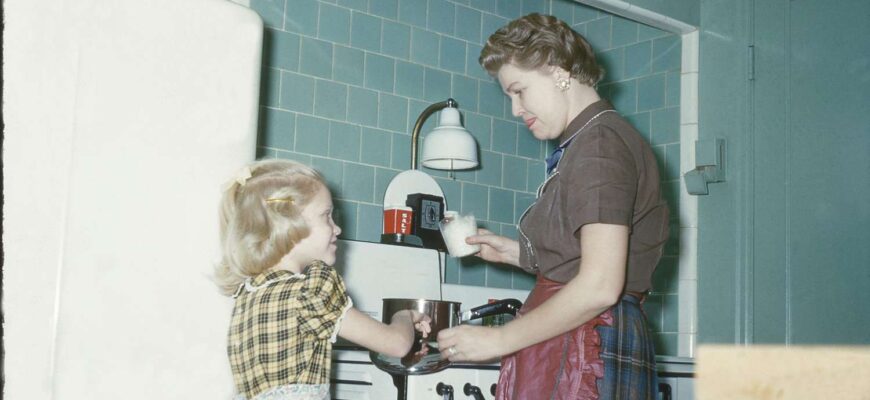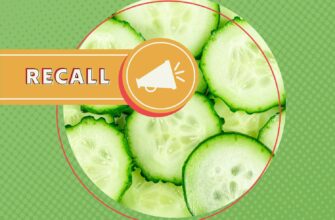Close


Credit: Getty Images
Your mom was probably the best home cook you knew—and hopefully, she passed down her skills (and secret recipes) to you. But chances are, she also passed along a few not-so-great kitchen habits.
You might be thinking, Wait, what bad habits? The truth is, many of us have inherited some outdated or questionable practices without even realizing it. And while they may have been common back then, it’s time to leave them behind.
To be fair, not all of these came from Mom. Maybe they came from Dad, Grandma, Pap, or anyone else you spent time with in the kitchen. Either way, from food safety slip-ups to storage mistakes, here are the kitchen habits worth rethinking—and maybe even nudging Mom to rethink, too.
1. Leaving Leftovers on the Counter All Day
After cooking, eating, and then cleaning, sometimes Mom just didn’t feel like putting the leftovers away. Instead, she’d package up every bit of reusable food and leave it out—just sitting on the counter—for hours, or even overnight.
According to the USDA, it’s safe to leave leftovers at room temperature for up to two hours. After that, the risk of bacterial contamination increases. Bacteria that thrive at room temperature can cause foodborne illnesses, leading to flu-like symptoms such as nausea, fever, and vomiting.
To prevent this, the safest move is to package any leftovers immediately—using plastic wrap, aluminum foil, or a sealed food storage container—and place them in the refrigerator.
2. Thawing Meat in the Sink While at Work
More than once, Mom forgot to take the meat for that night’s dinner out of the freezer until it was too late. So, as she rushed out the door, you may have seen her toss a big hunk of frozen beef or chicken into the sink to thaw all day while she was gone.
You’ve probably done it once or twice yourself since having your own kitchen. But is it a good idea? Not really—because it puts your food at serious risk for bacterial contamination.
Just like cooked foods, raw meat shouldn’t be left out at room temperature for more than two hours, even if it’s frozen. After that point, bacteria can start to grow. As the meat thaws, the outer layers reach room temperature—prime conditions for bacterial growth—while the inside remains frozen.
Sorry, Mom, but this habit has got to go.
To properly thaw meat, you can place it in a refrigerator overnight. However, this can take up to 24 hours, so you’ll need ample time.
If you’re short on time, you can thaw meat using cold water or the microwave.
To thaw with cold water, seal the meat in a leak-proof bag and submerge it in a bowl of cold water. Replace the water every 20 minutes until fully thawed.
To use the microwave, select the defrost setting—but be sure to cook the meat immediately afterward, since some areas may begin to cook during the process.
3. Throwing Spaghetti Against the Wall to Test Doneness
First off, Mom, why would you waste perfectly good pasta like that? Being the chef means you get to sneak a few extra pieces while it's cooking, so you can just tell if the pasta is cooked.
Not only is this method a little wasteful and messy, but also it might not even work the way Mom thinks it does.
Yes, sticky spaghetti will stick to the wall, but that actually doesn't have anything to do with its doneness—it just means that the pasta is sticky.
When cooking pasta, most chefs like to cook it to al dente, which means it’ll have a tender bite, but it’s not mushy. And the only way to test if your pasta is al dente is by doing a taste test.
A few minutes before the cooking instructions suggest, pull a strand out of the pot and try it. If it’s done, then it’s time to serve. If not, then give the pot a couple more minutes on the stove. Save yourself (and the wall) from the mess.
4. Rinsing Chicken in the Kitchen Sink
Mom, why, oh why do you do this? Well, probably because her mom did it too—but it’s time to stop.
Chicken should not be washed in the sink. Read that again—it’s important.
First, it’s simply not necessary. Yes, chicken is often packaged with a sodium solution to keep it flavorful and juicy, so you might notice extra moisture. But rinsing it in the sink creates a serious risk of spreading bacteria.
In fact, studies have shown that rinsing chicken can cause germs to spray up to three feet from the sink.
If you really want to "clean" your chicken, just pat it dry with a paper towel—problem solved.
And if rinsing is a habit you just can’t shake, make sure to thoroughly sanitize your sink and everything within a three-foot radius afterward—including the counters, floor, and even your clothes or apron.
5. Storing Tomatoes in the Crisper Drawer
So, Mom won’t put the leftovers away, she defrosts frozen meat on the counter for hours—but she’s in a rush to toss her tomatoes into the crisper drawer? Come on now, Mom…
The fridge is actually the worst place to store your fresh tomatoes. Temperatures below 60 degrees F (about 15 degrees C) can turn perfectly good ‘maters into mush.
Instead, keep them on the counter, either loose or in a food storage container.
The only time tomatoes belong in the fridge is after they’ve been cut.
6. Using Margarine and Butter Tubs as Storage Containers
Who would have thought to use the butter tub as a food storage container besides good ol’ Mom? Because those mountains of Tupperware in her cabinets just aren’t enough, right? She would never throw away a perfectly good container! And it was free!
The only problem with this idea is that reusing plastics marked with #3, #6, and #7 isn't safe. So while the containers are perfectly fine for holding butter, they were not designed to be rewashed and reused two times (or three or 30).
After the butter is gone, throw those containers right into the recycling.
Containers marked with other numbers are fine to reuse, but they shouldn’t be microwaved. Instead, dump your food on a plate before reheating—or a better option is using glass food storage containers.
7. Putting Cracked Egg Shells Back in the Container
Mom always said it’s easier to toss cracked eggshells back into the carton so you can throw them away all at once. But is it really easier—or sanitary?
The truth is, once an egg is cracked and emptied, the shell should be thrown away immediately. Putting it back in the carton while you crack more eggs can transfer bacteria from the raw egg to the remaining, uncracked ones, putting you and others at risk for foodborne illness.
And if you’re someone who saves used egg cartons for any reason, it’s time to break that habit. These egg cartons are just homes for bacteria that are waiting to spread. Pop those in the recycling, too.
8. Using One Dish Towel to Clean Every Surface — Including Your Face
Mom always had that one towel she used for everything—from drying dishes to wiping counters, and even dabbing your face. That towel did it all.
But if you haven’t guessed it by now, that’s not exactly the most sanitary choice. Her go-to kitchen towel (or sponge) was basically a germ mop, spreading bacteria from one surface to the next.
Don’t get us wrong—kitchen towels and sponges are great, and they're an eco-friendly option, too. But using the same one over and over without swapping it out defeats the purpose.
Mom probably even had a drawer full of clean towels she rarely touched. So, take a note from the back of that drawer: keep a stash, and change them out at least once a week—or better yet, every few days. And if you're using a sponge, toss it in the microwave on high for one minute to kill germs. (Just make sure it doesn’t contain any metal.)
9. Storing Bacon Grease on the Counter
If your mom taught you the beauty of bacon grease, you probably remember her Mason jar full of it always sitting on the counter or stove. And honestly, you can’t really lecture her on that—because her method can be safe. That said, there are even safer ways to store bacon grease that we prefer today.
First things first: always save your bacon grease. That flavorful fat can elevate everything from cornbread to eggs. (And if you didn’t know already, never pour it down the drain.)
To store it properly, start by straining out any leftover bacon bits. Then pour the grease into a Mason jar or another heat-proof container, and keep it in the fridge or freezer to help it stay fresh longer.
Explore more:
Was this page helpful?
Thanks for your feedback!
Tell us why!
Other
Submit








